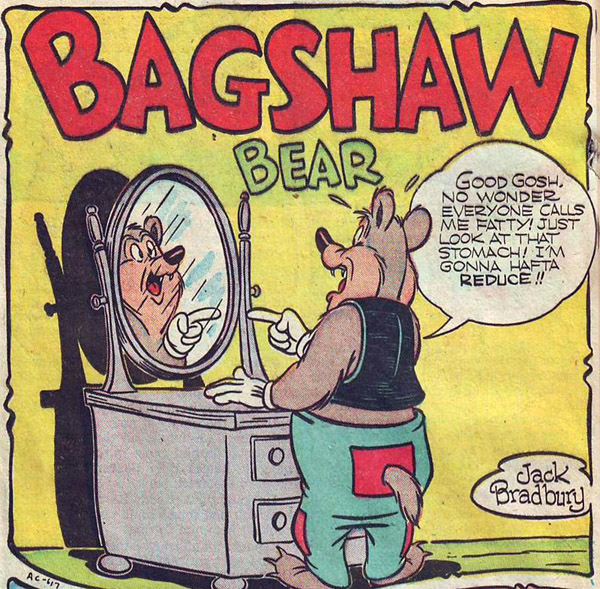
Suspended Animation #272
John “Jack” Morin Bradbury was born in Seattle, Washington on December 27th, 1914 and passed away on May 15, 2004 at the age of 89. Thanks to the kindness of my friend Dave Bennett, I met Bradbury briefly while we were standing in line waiting to go into a San Diego Comic Book Convention and we had a nice conversation. I am glad that I got a chance to tell him how much I enjoyed his work.
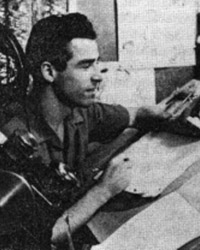
Jack Bradbury at Disney in the 1930s
“Then, about 1933, I saw Disney’s Three Little Pigs which was playing at the Fifth Avenue theater in Seattle. It took the whole town by storm and this opened up another area of interest for me. The entire town was going around singing the theme song.
“I heard through a friend that they were looking for new art talent at Disney’s. I wrote and sent down some of my work. They sent back an answer and said for me to come on down and take a two week tryout. Of course, they did that for everybody. They said to be sure to have enough money to take care of yourself and enough money to get back home if necessary. So I did. I had about $50.00 which was enough to get there and live on for a couple of weeks. I passed the test, and then went to work for Disney at the great high salary of $15.00 a week.”
At the age of twenty, he joined the Disney Studio and worked as an inbetweener from 1934-1938 on such cartoons as The Band Concert, Through The Mirror and even Snow White and the Seven Dwarfs.
He worked as Bob Wickersham’s assistant. (Wickersham’s nickname was “Wick” and he later did comic book work under the name “Bob Wick”.) Ken Hultgren, Don Lusk and Bradbury were the clean-up men for the funny animal stuff being animated by Eric Larson, Milt Kahl, and Jim Algar. Those three animators did much of the animal animation in Snow White.
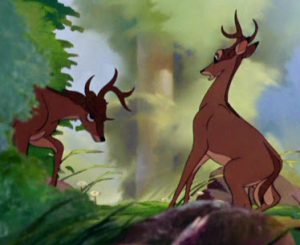 “When we were getting through with that, I started doing some personal tests for animating which you could do at any time. You had to draw, do some animation, set it up and have it filmed. Then you could run it on the movieola to see how it looked. It could then be corrected, changed, whatever. I did some stuff and gave it to Ham Luske, who was then directing. He took it up to Walt Disney who approved it, and that started me animating,” Bradbury told Bennett.
“When we were getting through with that, I started doing some personal tests for animating which you could do at any time. You had to draw, do some animation, set it up and have it filmed. Then you could run it on the movieola to see how it looked. It could then be corrected, changed, whatever. I did some stuff and gave it to Ham Luske, who was then directing. He took it up to Walt Disney who approved it, and that started me animating,” Bradbury told Bennett.
Bradbury worked with Ham Luske on Ferdinand the Bull and Fantasia and always said he considered him a major influence, “I loved working for Ham. One of my real joys of being at Disney was working for Ham.”
Bradbury was soon made a full animator at the studio from 1938-1941 where he worked on several key scenes in Disney animated features, including the stag fight in Bambi, the Pegasus family gliding in to a watery landing in Fantasia, and Figaro walking across Gepetto’s bed in Pinocchio.
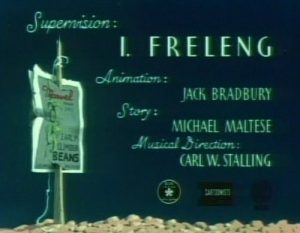 He also continued to produce animation for the shorts including Ferdinand the Bull (the sequence where the young bulls were fighting in the field and the scene where Ferdinand sits on the bee) and Farmyard Symphony.
He also continued to produce animation for the shorts including Ferdinand the Bull (the sequence where the young bulls were fighting in the field and the scene where Ferdinand sits on the bee) and Farmyard Symphony.
“I started working on The Wind in the Willows. Jack Kinney was directing some of the sequences. I had just gotten started when the strike happened. We all went out on strike, and were out for about six or seven weeks. When it was all over, I got a telegram to come back. I came back to work for awhile, then Disney started to lay off a bunch of guys.” remembered Bradbury.
After a short time working in an aircraft factory, he worked in Friz Freleng’s unit at Warner Brothers from 1942-1944 on a variety of shorts including those featuring Bugs Bunny. In 1944, he started illustrating comic book stories featuring funny animal characters like Fremont Frog, Spencer Spook and others for ACG and also providing artwork for Bagshaw Bear, Hucky Duck and others for Nedor/Standard. He continued working for these comic book companies until around 1951-52.
 This work was done as part of the Jim Davis (the animator, not the creator of Garfield) shop that utilized animators to moonlight doing comic book stories for extra money–roughly $15.00 to $25.00 a page to write, pencil and draw–and included such folks as fellow animators Al Hubbard, Hubie Karp, Bob Wickersham, Owen Fitzgerald, Ken Hultgren and Davis himself.
This work was done as part of the Jim Davis (the animator, not the creator of Garfield) shop that utilized animators to moonlight doing comic book stories for extra money–roughly $15.00 to $25.00 a page to write, pencil and draw–and included such folks as fellow animators Al Hubbard, Hubie Karp, Bob Wickersham, Owen Fitzgerald, Ken Hultgren and Davis himself.
In 1947, Bradbury also started doing work for Western Publishing where he illustrated coloring books, activity books, big little books (Goofy in Giant Trouble), and hundreds of comic books for the Dell/Gold Key labels.
He drew practically all the Disney characters from Mickey Mouse and Goofy to Little Hiawatha, Gyro Gearloose and Li’l Bad Wolf not to mention all the Disney ducks. Bradbury also produced Disney material featuring Mickey, Goofy, the Ducks and Chip’n’Dale among others for overseas use.
As friend Mark Evanier wrote when Bradbury died, “He was the main artist on Pluto stories but could and did draw almost every animated character they published. His renderings of the Disney characters were so ‘alive’ and so faithful to the source material that Walt Disney himself reportedly told the Western editors that they didn’t need studio approval of anything that Bradbury drew.”
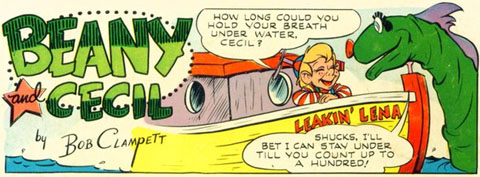
In addition to the Disney characters, Bradbury also drew comic books featuring the Walter Lantz stable of characters, the Warner Brothers characters and Bob Clampett’s Beany and Cecil. Yet, Bradbury never wrote any of the stories that he illustrated. His characters, while on model, could often be distinguished by looking a little taller and thinner than some other artists.
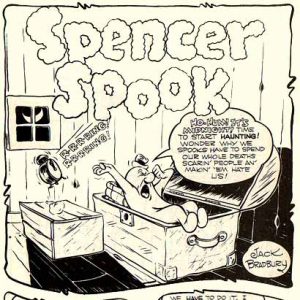 “I continued to draw for Western until about 1969. Then I started having some eye trouble. Towards the end, I was only penciling with somebody else inking the stuff. So they asked me if I would prefer just getting into the writing.
“I continued to draw for Western until about 1969. Then I started having some eye trouble. Towards the end, I was only penciling with somebody else inking the stuff. So they asked me if I would prefer just getting into the writing.
“I had never written for Disney before, except I had contributed an occasional story to Western and sold a few. I had never gone into it seriously. So I said, ‘yes’ and wrote for awhile with sort of on-and-off success. Toward the end of that time, I was getting close to retirement age, so I got to the point where I quit. I was getting tired of everything, and just stopped,” Bradbury told Bennett.
Bradbury’s eye problem was called “macula degeneration” which is basically degeneration of the retina where “the little protein spots in the center of the retina move out and your center vision goes with it”.
For too many animation and funny animal comic book fans, Bradbury is unknown and underappreciated. It was Dave Bennett who brought his work to my attention and who worked hard to give Bradbury comfort and recognition in the remaining days of his life.
For more about Bradbury’s career in comics, see this previous Cartoon Research post by Devon Baxter.
To learn even more about Bradburys career, his son created this website dedicated to his fathers work.
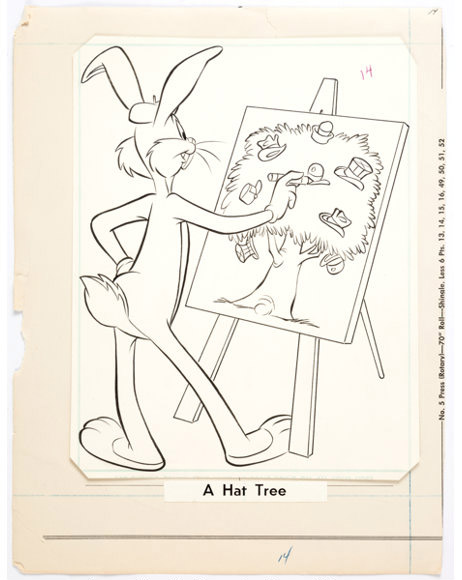
Heritage Auctions credited this 1950s coloring book page to Jack Bradbury.


 Jim Korkis is an internationally respected animation historian who in recent years has devoted his attention to the many worlds of Disney. He was a columnist for a variety of animation magazines. With his former writing partner, John Cawley, he authored several animation related books including The Encyclopedia of Cartoon Superstars, How to Create Animation, Cartoon Confidential and Get Animated’s Animation Art Buyer’s Guide. He taught animation classes at the Disney Institute in Florida as well as instructing classes on acting and animation history for Disney Feature Animation: Florida.
Jim Korkis is an internationally respected animation historian who in recent years has devoted his attention to the many worlds of Disney. He was a columnist for a variety of animation magazines. With his former writing partner, John Cawley, he authored several animation related books including The Encyclopedia of Cartoon Superstars, How to Create Animation, Cartoon Confidential and Get Animated’s Animation Art Buyer’s Guide. He taught animation classes at the Disney Institute in Florida as well as instructing classes on acting and animation history for Disney Feature Animation: Florida.




















































For a short time when we were growing up, my brother had a Super 8 movie camera, which he had bought from one friend and then sold to another soon after. He never got a projector, but he did buy a little hand-cranked film viewer to watch his home movies on. It came with two short cartoon reels: an abridged version of Little Roquefort in “Pastry Panic”, and the stag fight from “Bambi”.
I remember watching those cartoons frame by frame on a little screen the size of a credit card and marveling at the animation. I had always loved cartoons, but I had never been able to give them that level of detailed scrutiny in those days before home video and pause buttons. It was a revelation that greatly heightened my appreciation for the art form, and was probably the moment when I began to consider cartoons as a subject worthy of serious study.
Years ago I learned that Jim Tyer was the principal animator on “Pastry Panic”, but only today did I find out that Jack Bradbury was responsible for the animation of the stag fight. He may have been unknown to me, but, as one of the first animators whose work I examined in detail, far from underappreciated. Thanks for posting this. It’s good to know more about Bradbury’s life and work.
Fascinating stuff as usual. I thoroughly enjoyed “BEANY AND CECIL”, but I don’t recall ever finding a coloring book on the characters.
Thanks for spreading the good word about Jack Bradbury, Jim!! I remember that day at the San Diego Con with Jack, introducing him to you, and how amazed he was with the attention and admiration that comic books in general, and he in particular, were receiving that day! He had lost track of the comic book world in the 20-or-so years since his last work for Gold Key, and had no idea people were so avidly collecting “silly throwaway stories” like he had labored on for so many years!
Anyone who may be curious about Jack’s very early funny animal comic book work for Nedor/Pines/ACG might enjoy visiting the website that Jack’s son Joel set up in memory of his wonderful artwork – at http://jbrad.org He was not only masterful, but his output was prodigious — I have cataloged over 6216 pages of his work!
Thanks again, Jim, for the lovely column!
Hi Dave. Mainly wanted to say hello, but every time I see Jack Bradbury’s name I want to know more about his time with Freleng at Schlesinger’s. Most notable, and the one he was actually credited on, was “Jack Wabbit and the Beanstalk”. I think I can identify his work because that particular type of Bugs Bunny drawing vanished once Jack was gone. Maybe Bradbury left Freleng around the same time as Owen Fitzgerald did? That led to Hawley Pratt coming in to replace him…and I remember you meeting Hawley, at my instigation, in Thousand Oaks circa 1988 or 1989. Best regards old pal!
Just as Frank McSavage seemed to be Walter Lantz’s go-to guy for his publicity art, Bob Clampett felt the same way about Jack Bradbury. Clampett was a master of self-promotion and did a surprising amount of print giveaways related to BEANY AND CECIL that were never sold in stores. Almost ALL of it — at least in the TIME FOR BEANY era — were drawn by Jack Bradbury.
BTW, as a kid, I may not have known his name, but I mentally cataloged him as “the guy who doesn’t fill in the black of Mickey and Goofy’s noses.” And it’s true. He always made ’em look shiny by FEATHERING his ink lines,
In 1987 ACE Comics published a special devoted to Bradbury (ACE Comics Presents #2) reprinting a number of funny animal stories he drew while working for the Davis shop. And ACE’s revival of Spencer Spook in its 4th issue included a new story scripted by Bradbury and drawn by Dave Bennett.
Disney comics fan Klaus Strzyz interviewed Bradbury about his career. I published a translation of it (by my friend the late Stephen Eberhart) in The Duckburg Times #19 (1983).
I am glad to see him receiving well deserved attention.
Hi Greg! (I hope you see this – there apparently is no way to post a reply right under your message, so I guess this will just go at the bottom of the existing posts!) Great to ‘hear’ from you!
I think you are correct in all your suppositions – ‘Jack Wabbit and the Beanstalk’ is definitely one that Bradbury worked on – he only ever mentioned about 3 or 4 shorts that he could remember animating on. He enjoyed his time at Warner’s, but said he never felt totally comfortable or happy with his work there – mainly because he had always animated 4-legged characters at Disney, and adapting to bipedal characters like Bugs and Sylvester was a chore for him!
Jack and Owen Fitzgerald had a bit of a mutual-admiration mini-society . . and I think you are right that they both left Warner’s around the same time. Somewhere in the mess that is my studio I still have the tape recorder cassettes that hold about 3+ hours of discussion we had about his career, but that I never got around to fully transcribing. Someday . . someday.
So good to hear from you, Ol’ Buddy! I remember so well that visit with Hawley Pratt that you set up . . and all the things you taught a young cartoonist when we shared that 5th floor room in downtown Cleveland! :o) Stay well!
Hi Dave!
Actually there IS a way to post under a comment – just as I’m doing now. Instead of going to the bottom of the page and writing a reply there, hit the “reply” button on the lower right of your initial comment above. That will place your new comment exactly below Greg’s response to you.
If you try it and it works, I’ll delete this comment.
Thank you, Jerry! I never would have thought to try that!
I’m a bit disappointed that Fantagraphics hasn’t done or announced a Disney Masters Volume spotlighting Bradbury yet. At least Hubbard is getting one later this year.
Anyone here know the best way to contact Jim Korkis on social media? I’d really like him to settle a complex debate about Disney and animation history once and for all.
Jim doesn’t do social media. If you elaborate in a comment Jim will likely see it and respond.
It has to do with the origins of Mickey Mouse and Oswald. Some people on the Internet, including some academics and journalists, claim that both the white or light-colored gloves Mickey and friends wear, and the white face/black body design of Mickey, Oswald, and many others was directly inspired by blackface minstrelsy. As a huge Mickey fan almost since birth, I really want to hear Jim Korkis settle this debate once and for all because I always trust his takes on Disney history because he seems to know more about Disney history than anyone else I’ve ever come across. I feel with the political climate being what it is now, with racial issues such a hot topic, the time is right for Disney historians to tackle this claim head-on.